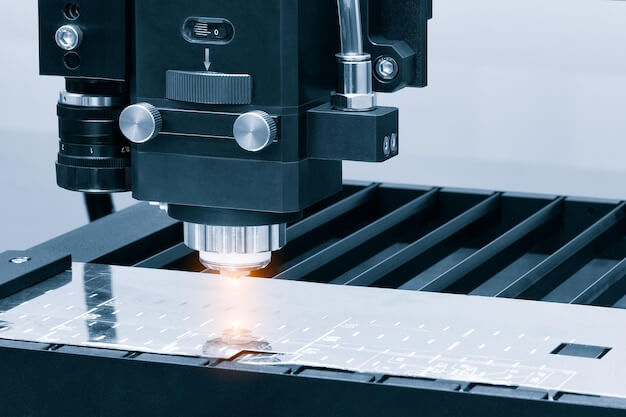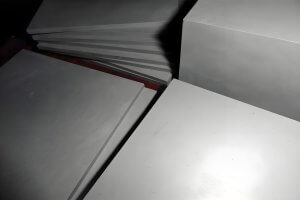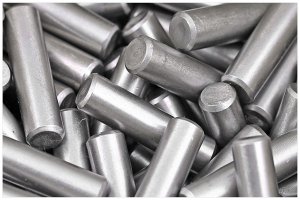Understanding Material Ductility in CNC Machining
In the realm of Computer Numerical Control (CNC) machining, where precision and accuracy are paramount, material ductility represents a significant factor influencing the quality and efficiency of the manufacturing process. The intrinsic ability of metals to deform under tensile stress without fracturing is what defines their ductility. Grasping the challenges associated with this property is crucial for effectively milling parts that meet stringent specifications. Materials with high ductility, like aluminum or mild steel, can pose distinct difficulties during machining such as undesirable elongation or deflection, leading to inaccuracies and potential tool damage. Conversely, low-ductility materials might present risks of cracking or brittle failure under cutting forces. Recognizing these issues and adapting strategies accordingly ensures superior craftsmanship and structural integrity of machined components.
Definition of Material Ductility
Ductility refers to a material’s ability to deform under tensile stress, which is an essential factor in CNC (Computer Numerical Control) machining processes. When considering the ductility of materials used for CNC machining, it defines how pliable or malleable a substance is and consequently affects the quality of the finished component. Materials that exhibit high ductility, such as aluminum or mild steel, can endure significant deformation before rupture, allowing them to be effectively shaped into intricate parts without fracturing. In contrast, brittle materials like cast iron or glass possess low ductility and are more likely to crack or shatter when subject to similar stresses. The practical implications during machining include choosing cutting conditions and tool geometries that mitigate the risks associated with each type of material; ductile materials may require specific cutting speeds and feeds to prevent excessive elongation while brittle materials necessitate careful handling to avoid abrupt breakage.
Machining Challenges Posed by Ductile Materials
During CNC machining, ductile materials present a distinct set of challenges due to their inherent properties. Such materials tend to stretch rather than chip away cleanly, complicating the creation of precise cuts and potentially leading to poor surface finishes or dimensional inaccuracies. Furthermore, the machining process can induce stress in these malleable materials, causing them to warp or deform unpredictably. This behavior not only hampers the accuracy but also affects the functional integrity and aesthetics of the machined component. Special considerations must be employed, such as fine-tuning cutting parameters and employing advanced toolpath strategies, to mitigate the deformation and achieve the desired machining outcomes.
Tool Wear and Breakage Concerns
When machining ductile materials, the wear on cutting tools is accelerated due to the material’s ability to elongate and resist fracture. The constant adhesion of the ductile workpiece material onto the tool surface leads to increased abrasion and necessitates more frequent replacement or servicing of the tools, impacting project timelines and costs. Additionally, ductility can result in non-uniform deformation during cutting, presenting a risk for unpredictable loads on the tool. This can cause sudden breakages of the cutting edge, posing safety hazards and potential disruptions to the machining process. For example, during the milling of soft aluminum alloys, the gummy nature of the material can lead to excessive buildup on the cutter, causing an unexpected snap at the tool’s weakest point.
Surface Finish Issues
Machining ductile materials often presents a challenge in maintaining a high-quality surface finish due to the material’s tendency to stretch and deform rather than cut cleanly. This can lead to problems such as burr formation, where excess material protrudes from the edge of the workpiece after machining. To overcome these issues, machinists employ strategies such as optimizing cutting parameters like feed rate, speed, and depth of cut to minimize the stress on the material. Additionally, using sharp tools with appropriate coatings can reduce heat build-up that exacerbates burr formation. Effective use of coolant also aids by lubricating the cutting process and removing chips efficiently, preventing them from being re-cut and forming burred edges.
Impact of Material Elasticity on Precision and Accuracy during Machining
The pliability of ductile materials inevitably introduces a challenge when precision and accuracy are paramount in CNC machining. As these materials tend to deform under the stress of cutting tools, maintaining exact dimensional control becomes problematic. Minute deflections or spring-back effects can result in parts that deviate from their intended geometries. To counter this, precise adjustments in alignment and setup must be made ahead of time. For example, implementing compensation strategies within the CNC machine programming can pre-emptively account for potential material flex, ensuring that final cuts accurately reflect design specifications. Careful calibration and clamping techniques may also be required to stabilize the workpiece throughout the machining process.
Work-Holding Complications
The secure work holding of ductile materials is essential in CNC machining due to the tendency of these materials to deform when subjected to forces, leading to inaccuracies or tool damage. To minimize movement and displacement, engineers employ various strategies such as vacuum fixtures that distribute holding force evenly, or vises with specialized soft jaws shaped to match the contour of the part which prevent marring and ensure stability without excessive clamping force. Additionally, implementing programmable pressure controls can finely adjust the gripping power according to the material’s properties, avoiding deformation while providing ample support during machining.
Thermal Management During Machining
Effective thermal management is crucial in CNC machining, particularly when dealing with materials that have high ductility. The pliability of these materials often leads to an increased generation of heat as they deform rather than readily chip away. Managing this heat is pivotal to prevent the overheating of both the tool and workpiece which can result in compromised structural integrity and dimensional inaccuracies. Techniques like interrupted cutting, using coolant fluids, or optimizing the feed rate and cutting speed are employed to dissipate heat efficiently. For example, applying a coolant not only reduces temperature but also lubricates the cutting area, extending tool life and maintaining the quality of the machined surface by removing heat through evaporation and convection mechanisms.
Case Study Example: Machining of Pure Copper
In a case study involving the machining of pure copper, a highly ductile material known for its excellent thermal and electrical conductivity, engineers faced significant challenges with material deformation and tool wear. The inherent softness and stickiness of copper caused excessive burring and surface finish issues during the CNC machining process. To counteract these problems, precise control of cutting speeds, use of sharp carbide tools, and employment of a high-pressure coolant system were implemented to minimize heat generation and facilitate chip evacuation. Additionally, specialized tool paths were programmed to create intermittent cuts, reducing the contact time between tool and workpiece thus limiting the chances for material smearing. This strategic approach showcased how tailored techniques can overcome the obstacles brought about by the ductility of materials like copper in precision CNC operations.
Best Practices for Machining Ductile Materials
In the realm of CNC machining, ductility poses unique challenges that necessitate specific strategies to ensure both efficiency and quality in the manufacturing process. Key among these best practices is the selection of tools tailored to withstand the deformation characteristics inherent to ductile materials such as soft metals. Similarly crucial is the fine-tuning of machine speeds and feeds to mitigate the risk of inducing excessive work-hardening or generating unwanted heat due to material stretching. Effective coolant utilization also plays a pivotal role, providing necessary lubrication and temperature control to preserve the tool’s edge and maintain the integrity of the machined part. In practice, machinists might opt for high-positive rake angles on cutting implements to minimize resistance and thus lower the forces exerted during the shaping of pliable substrates.
Challenges Posed by Material Ductility in CNC Machining
The importance of recognizing material ductility within the realm of CNC machining cannot be overstated, as it directly influences the success and precision of the fabrication process. Acknowledging ductility limitations aids in making critical adjustments to machine settings such as reducing cutting speeds or modifying feed rates to prevent material deformation and ensure a quality finish. Tool selection also plays a pivotal role; for instance, utilizing sharper tools with specific geometries can minimize forces exerted on the workpiece and thereby mitigate the bending effect prominent in ductile materials. Furthermore, pre-treatment procedures like annealing may enhance machinability by tempering the material’s structure for easier shaping. In cases where CNC machining faces substantial hurdles due to extreme ductility, alternative manufacturing processes such as metal stamping or 3D printing might offer better compatibility, given their ability to handle the flow characteristics inherent in highly ductile metals.
Other Articles You Might Enjoy
- From Concept to Reality: Material Prototyping Challenges in CNC Machining
Introduction to CNC Machining and Material Prototyping CNC (Computer Numerical Control) machining stands as a cornerstone in modern manufacturing, enabling the precise and automated creation of parts from various materials.…
- Solving CNC Machining Challenges with Material Science: Innovations in Metal Alloys and Plastics
Introduction to CNC Machining and Its Challenges CNC (Computer Numerical Control) machining is a critical process in manufacturing, enabling precise, efficient production of complex parts. It plays an integral role…
- Precision CNC Machining of Steel: High-Volume Production
Precision CNC Machining and High-Volume Production As an integral part of modern manufacturing processes, Precision Computer Numerical Control (CNC) machining brings about unmatched accuracy and consistency in the production of…






